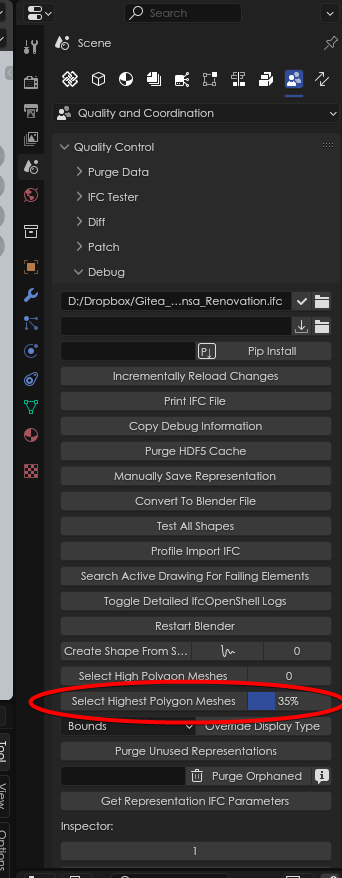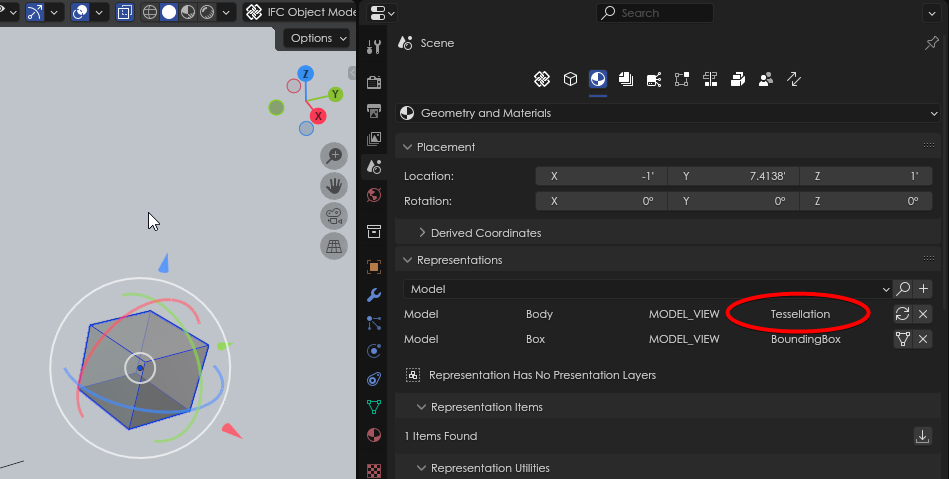@OGutierrez Hi, why are the walls causing the IFC to be so large/heavy? I have observed that it is excessively detailed windows, doors, furniture, fittings and fixtures that are often a problem. @Gorgious question about tesselation v vertical layers needs to be answered first.
I always think 'how many vertices? meaning, if someone created a fieldstone wall from a point cloud and classified it as an IfcWall then that would be a lot of vertices, a bit of an extreme example I know :)
I think decimate only works with tessellated geometry.
See the following to determine if geometry is a tessellation
You can also convert an object to a tessellation, but more times than not, that will increase the file size.
Comments
Is your IfcWall using a Tesselation representation or a vertical layer representation ?
I've no idea. I'm working on reducing the size of the ifc files with decimate. But in some ifc it works and in others it doesn't.
@OGutierrez Hi, why are the walls causing the IFC to be so large/heavy? I have observed that it is excessively detailed windows, doors, furniture, fittings and fixtures that are often a problem. @Gorgious question about tesselation v vertical layers needs to be answered first.
I always think 'how many vertices? meaning, if someone created a fieldstone wall from a point cloud and classified it as an IfcWall then that would be a lot of vertices, a bit of an extreme example I know :)
The following is also a nice tool to find those highly faceted objects in the model.

I think decimate only works with tessellated geometry.

See the following to determine if geometry is a tessellation
You can also convert an object to a tessellation, but more times than not, that will increase the file size.
Thanks! With tessellation the changes to ifc files are saved. Sometimes the size isn't smaller but the number of faces is.